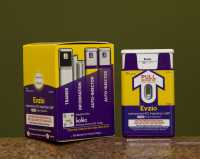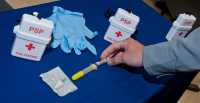Addiction, Author Interviews, Health Care Systems / 25.05.2024
Thirty-fold state level prescribing disparities of naloxone to both Medicaid and Medicare patients
MedicalResearch.com Interview with:
Srivastava Kodavatiganti, MBS
Department of Medical Education
Geisinger Commonwealth School of Medicine
Scranton, PA
MedicalResearch.com: What is the background for this study?
Response: Prescription and illicit opioid misuse and overdoses have continued to escalate in the U.S. with annual overdoses exceeding 110,000[1]. There was a substantial rise from 2013 to 2022 in the number of opioid-related overdoses due to synthetic opioids [2]. Even nonfatal opioid-involved overdoses increased 4% quarterly between January 2018 and March 2022 as observed by encounters by emergency medical services [3]. Although the eastern U.S. has been particularly impacted by fatal overdoses, annual increases have increased as of last year in the western states including in Nevada (+27.9%), Washington (+36.9%), Oregon (+38.6%), and Alaska (+45.9%). In contrast, other states have seen more modest changes (New Mexico = +1.3%) including decreases (South Dakota = -2.4%, Nebraska = -19.5%) [1]. These findings underscore the importance for understanding patterns in usage of prevention and treatment strategies.
Naloxone is an opioid antagonist which can reverse the effects of an opioid overdose. This crucial lifesaving tool is administered as an injection or as a nasal spray. This study characterized the patterns of naloxone prescriptions in Medicaid patients from 2018 – 2021 and Medicare patients for 2019. State level differences were also quantified as the fold difference in prescribing between the highest and lowest states when correcting for the number of enrollees in each state.
(more…)



